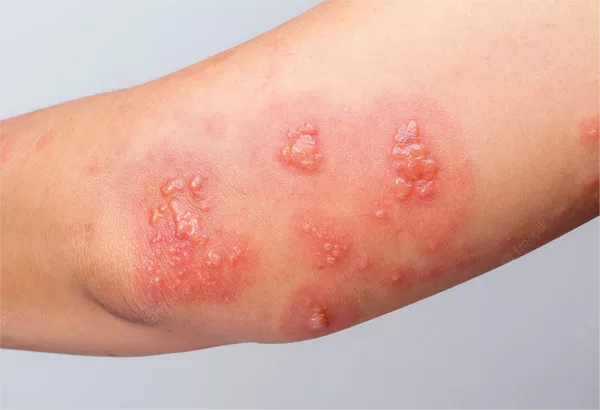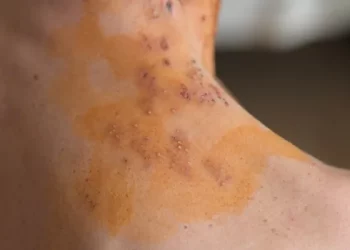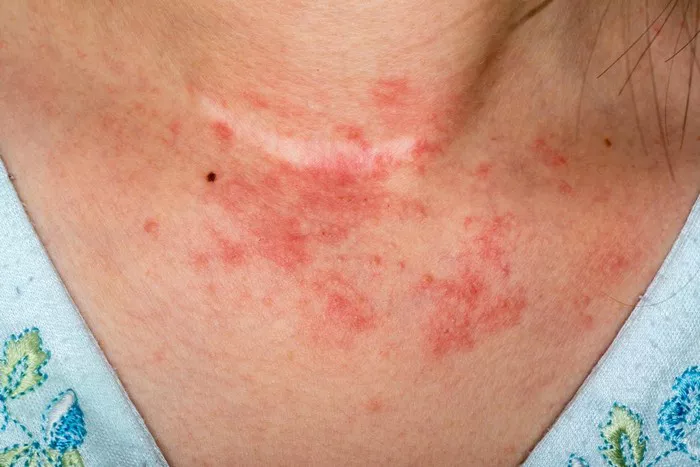Shingles, medically known as herpes zoster, is a viral infection caused by the reactivation of the varicella-zoster virus, the same virus responsible for chickenpox. Typically, after a person recovers from chickenpox, the virus remains dormant in the body’s nerve tissues. However, under certain circumstances, such as stress, illness, or a weakened immune system, the virus can reactivate, causing shingles.
One of the potential complications of shingles is postherpetic neuralgia (PHN), a condition characterized by persistent nerve pain in the affected area even after the rash has healed. While skin-related symptoms like the characteristic rash and blisters are more commonly associated with shingles, joint pain can also occur due to nerve inflammation.
Explanation of Shingles and Postherpetic Neuralgia
Shingles manifests as a painful rash that typically occurs on one side of the body, often in a band-like pattern. The rash is accompanied by fluid-filled blisters that eventually crust over and heal within a few weeks. The varicella-zoster virus is highly contagious and can be transmitted through direct contact with the fluid from the blisters of a person with shingles. However, unlike chickenpox, shingles is not typically spread through coughing or sneezing.
Postherpetic neuralgia (PHN) is a complication that affects some individuals after they have had shingles. It occurs when damaged nerve fibers send exaggerated pain messages from the skin to the brain. PHN can cause severe and persistent pain in the area where the shingles rash occurred, even after the rash has cleared.
Joint Pain as a Symptom
While skin-related symptoms like pain, itching, and burning sensations are common with shingles, joint pain can also occur. Joint pain in shingles is primarily due to inflammation of the nerves that supply the affected joints. This inflammation can lead to discomfort, stiffness, and reduced mobility in the joints.
Duration of Joint Pain
The duration of joint pain associated with shingles can vary widely from person to person. In some cases, joint pain may resolve within a few weeks after the shingles rash heals. However, for others, joint pain may persist for several months or even longer, especially if they develop PHN.
Postherpetic neuralgia (PHN) is a major factor contributing to prolonged joint pain in individuals with shingles. While the rash and blisters may clear up within a few weeks, the nerve damage caused by the virus can result in persistent pain that lasts for months or even years.
Treatment and Management
1. Medical Treatments
Several medical treatments can help alleviate joint pain associated with shingles:
- Antiviral medications: These medications can help reduce the severity and duration of the shingles infection, potentially minimizing the risk of developing PHN.
- Pain relievers: Over-the-counter or prescription pain medications can help manage joint pain and discomfort.
- Topical creams: Applying creams or ointments containing capsaicin or lidocaine to the affected area may provide relief from pain and itching.
- Nerve blocks: In some cases, healthcare providers may recommend nerve blocks to temporarily numb the affected nerves and reduce pain.
2. Home Remedies
In addition to medical treatments, certain self-care strategies can also help manage joint pain associated with shingles:
- Cold compresses: Applying a cold compress to the affected joints can help reduce inflammation and provide temporary pain relief.
- Rest: Giving the affected joints adequate rest can help prevent exacerbation of pain and promote healing.
- Gentle stretches: Performing gentle stretching exercises can help improve flexibility and reduce stiffness in the affected joints.
When to See a Doctor
It is essential to seek medical attention if you experience joint pain along with other symptoms of shingles, such as a rash or blisters. Additionally, if the joint pain is severe, persistent, or significantly interferes with your daily activities, it is crucial to consult a healthcare provider for proper diagnosis and treatment.
Prevention
The best way to prevent shingles and its associated complications, including joint pain and PHN, is through vaccination. The shingles vaccine is recommended for adults aged 50 and older, as well as for individuals who have previously had shingles. Vaccination can significantly reduce the risk of developing shingles and lower the likelihood of experiencing severe pain and complications if the infection does occur.
Conclusion
In conclusion, joint pain can occur as a symptom of shingles, particularly in cases where nerve inflammation affects the joints. The duration of joint pain can vary, with some individuals experiencing relief within a few weeks, while others may have persistent pain for months or longer, especially if they develop postherpetic neuralgia (PHN). Treatment options include medical interventions such as antiviral medications and pain relievers, as well as home remedies like cold compresses and gentle stretches. It is essential to seek medical attention for proper diagnosis and treatment, and vaccination against shingles is recommended as a preventive measure.

























